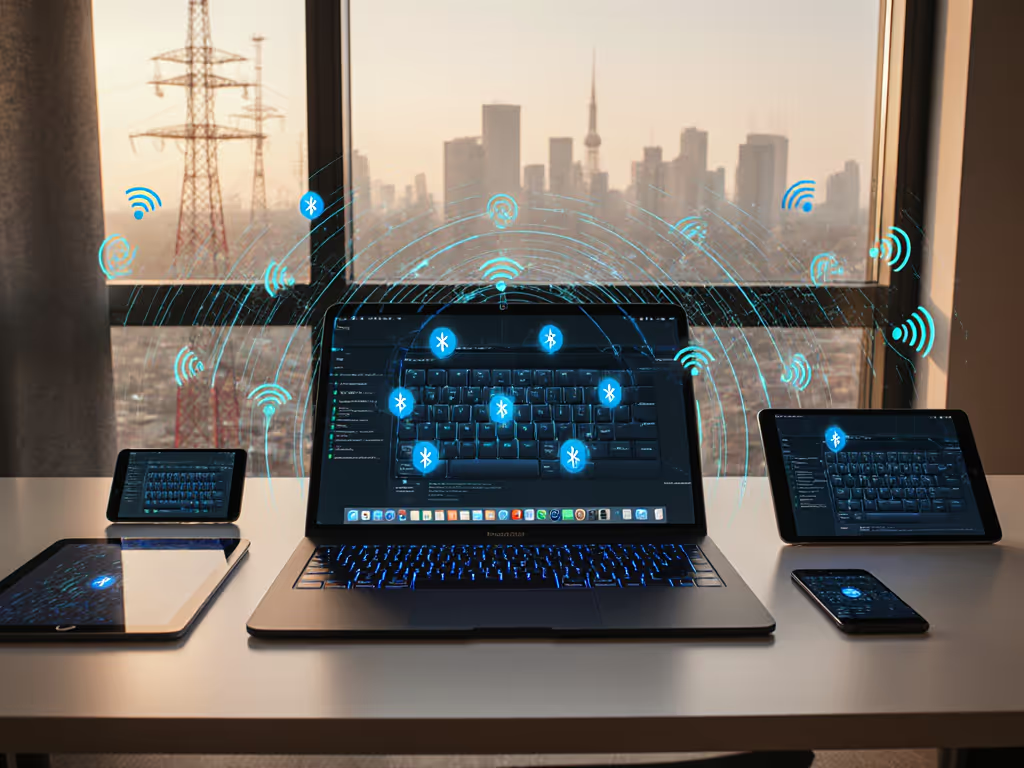
Bluetooth Keyboard Stability in Real-World Pairing
Evaluate and strengthen Bluetooth keyboard stability in real-world, multi-OS setups with actionable tests, pairing strategies, and interference fixes to reduce wake delays and dropouts.

When your keystrokes lag behind thought, whether during a critical sprint, a heated game, or a late-night coding session, you're experiencing keyboard latency in its most frustrating form. For many, wireless keyboard response time feels like a trade-off between freedom and reliability. But what if it didn't have to be? As someone who spent a sprint week with buzzing wrists and tight shoulders until a well-tuned split wireless rig restored my flow, I've learned that latency isn't just a number, it's the invisible barrier between friction and focus. Comfort that disappears lets focus stay where it belongs.
Latency isn't synonymous with input speed. It's the delay between keypress and on-screen action, measured in milliseconds (ms). While wired keyboards typically stay under 4 ms, wireless adds layers of complexity. But not all wireless is equal. Understanding this gap transforms how you choose gear, and why some boards feel sluggish while others feel like wired.
Real-world latency isn't just about specs. It's about whether your keyboard stays out of your way when pressure hits.
1. Signal Path Delays Wireless keyboards encode your keystroke, transmit it via radio (Bluetooth or 2.4 GHz), then decode it at the receiver. Each step adds time. Bluetooth keyboards often hit 20-100 ms latency due to protocol overhead (noticeable in gaming but usually fine for typing). Modern 2.4 GHz wireless (like Logitech's Lightspeed) cuts this to <10 ms, rivaling wired speeds. For a deeper dive, see our Bluetooth vs 2.4 GHz keyboards comparison for real-world stability and latency trade-offs. Critical insight: Bluetooth multipoint struggles in crowded RF environments (offices, apartments), causing stutter as signals compete.

2. Debounce Time & Matrix Scanning Every keyboard waits milliseconds after a keypress to avoid registering "bounces" (false inputs from physical switch vibration). Most mechanical boards add 5-20 ms here. Wired keyboards often scan their key matrix faster than wireless, but premium wireless models now match this. Dan Luu's high-speed tests confirm: key travel distance matters too (low-profile switches, like those in tented ergonomic boards, reduce physical delay by 5-10 ms versus deep-travel keys).
3. Sleep/Wake Cycles & Polling Rate To save battery, wireless keyboards enter low-power sleep. Waking up can add 500 ms to 2 s delay, enough to miss a keypress mid-flow. Polling rate (how often the keyboard checks for inputs) also plays a role: 125 Hz = 8 ms max delay, 1000 Hz = 1 ms. But chasing ultra-high polling drains battery fast. Balance is key.
For gaming: Yes, if latency spikes or exceeds 20 ms. Competitive shooters need consistency. Modern 2.4 GHz wireless gaming keyboard models (e.g., Razer's Hyperspeed line) now achieve <5 ms, making them viable for esports. Bluetooth? Avoid, it's too variable.
For typing: Rarely. Humans type slower than machines. Input delay measurement shows even 30 ms latency feels seamless if consistent. Where it hurts: real-time typing performance during rapid transcription or coding sprints. Inconsistent latency (e.g., spiking to 50 ms when switching devices) causes missed keystrokes and cognitive friction.
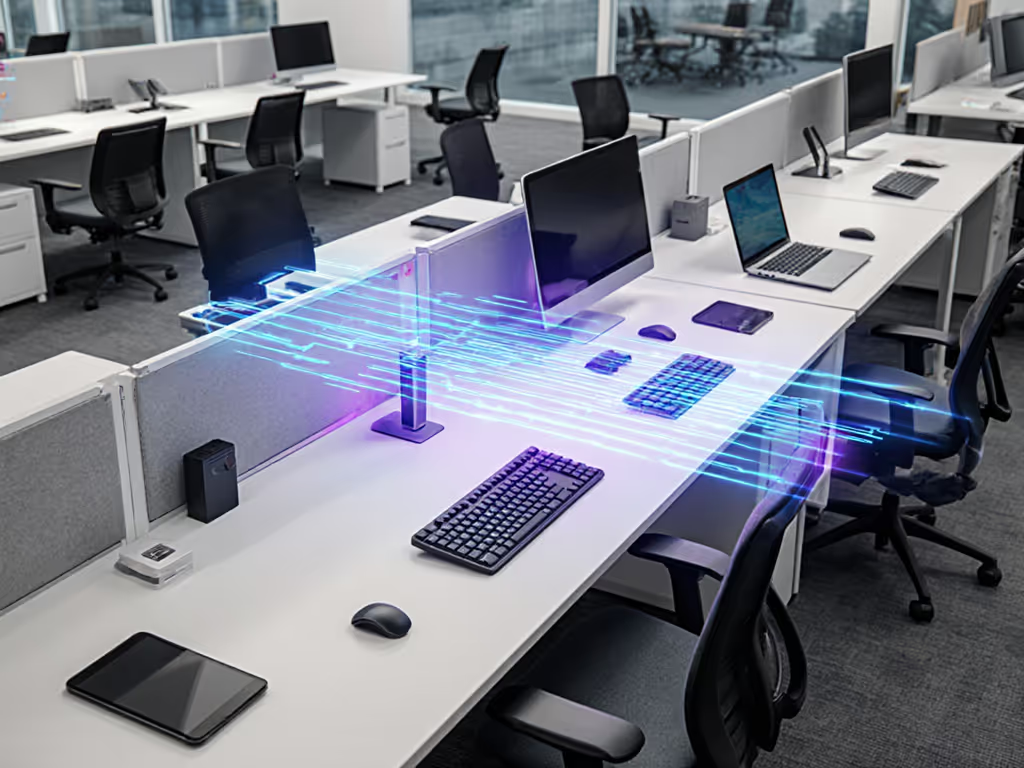
As an ergonomic specialist, I prioritize stability first. Here's how to vet wireless keyboards:
You don't need to buy new gear to reduce latency. Try these stability-focused tweaks:
A sprint week left my wrists buzzing until I dialed in tenting angle and swapped to low-force switches. The same principle applies to latency: tiny adjustments, measured through micro break frequency, not marketing, reveal where friction hides.
Modern wireless boards can deliver near-wired performance, if engineered for stability, not just specs. Bluetooth latency issues plague underspec'd designs, but 2.4 GHz wireless now achieves gaming-grade speed. Your mission: prioritize consistent response over peak numbers. Test keyboards in your environment (cafe, home office, co-working space) before trusting reviews.
Your next step: Grab a stopwatch. Time your keyboard's wake-up delay. If it's over 500 ms, that's friction stealing focus. Small changes, big relief.

Evaluate and strengthen Bluetooth keyboard stability in real-world, multi-OS setups with actionable tests, pairing strategies, and interference fixes to reduce wake delays and dropouts.
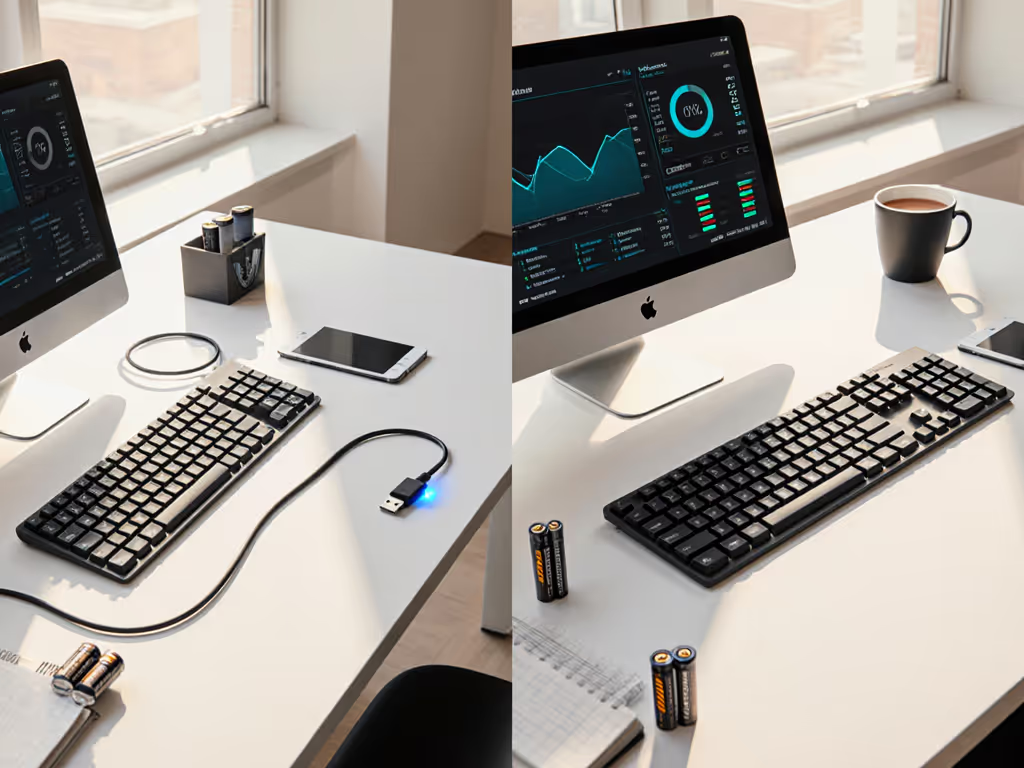
Breaks down the true productivity cost of keyboard power choices - wake delays, battery predictability, and failure risk - using cross-platform testing. Get data-backed, scenario-based guidance on when rechargeable or AA models best preserve workflow continuity.
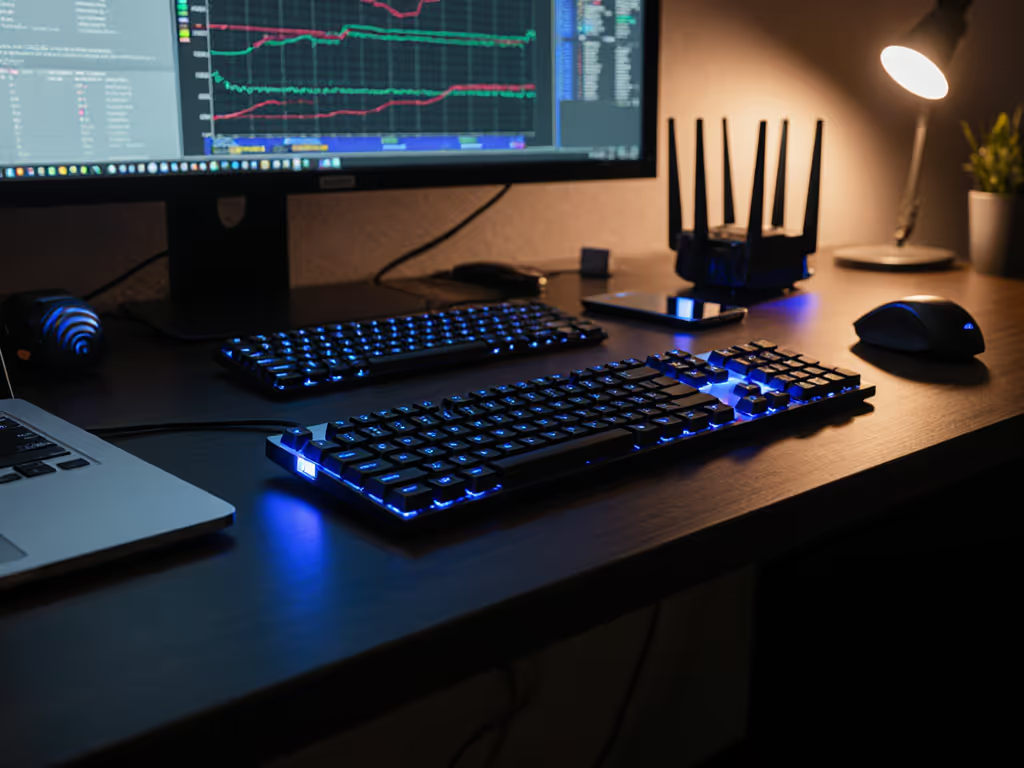
Real-world RF stress tests show 2.4 GHz dongle keyboards deliver steadier connections, faster wake, and lower latency than Bluetooth in crowded environments; reserve Bluetooth for minimalist, low-interference use or multi-device convenience.
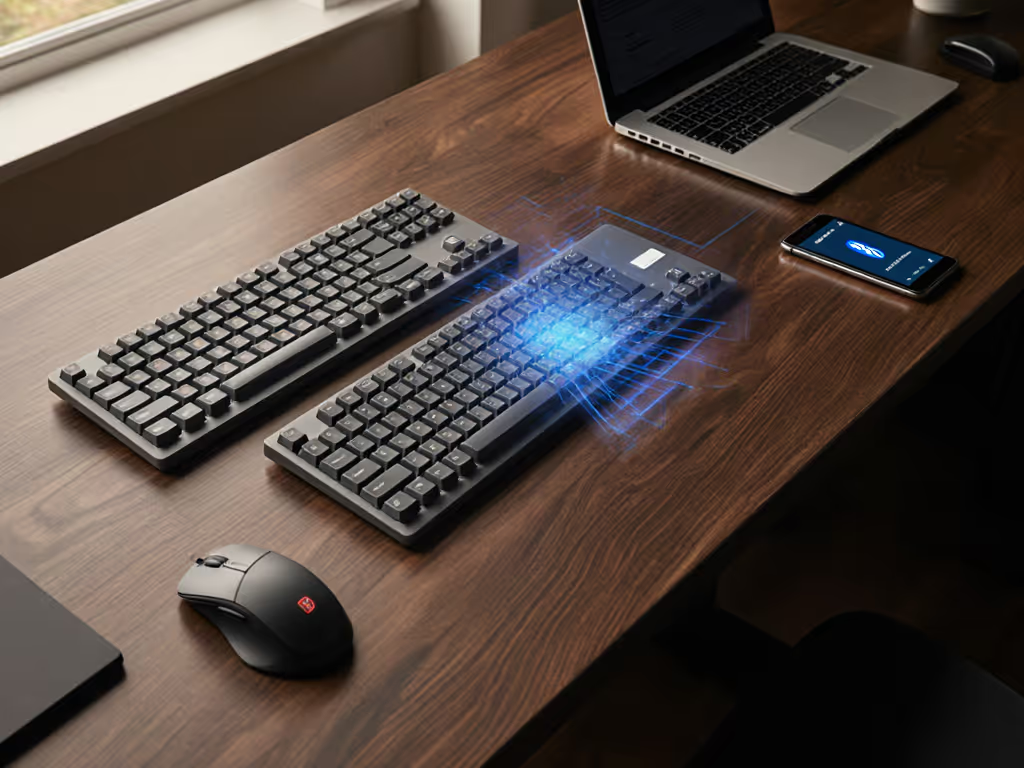
Track the shift from finicky IR/RF to mature Bluetooth with a focus on what preserves flow: low latency, fast wake, interference resistance, and seamless device switching. Apply practical stress tests and firmware tips to choose a keyboard that stays reliable across OSes and environments.